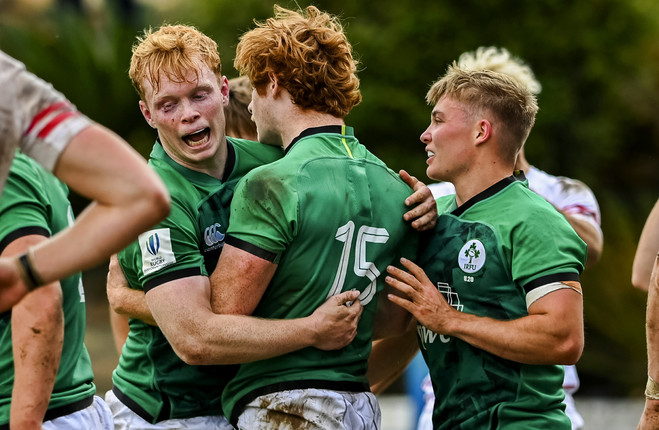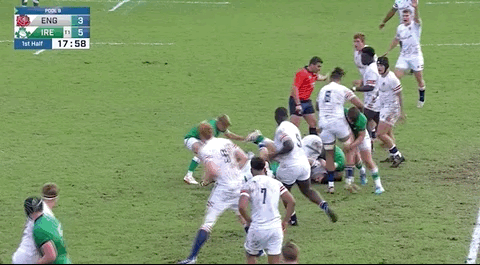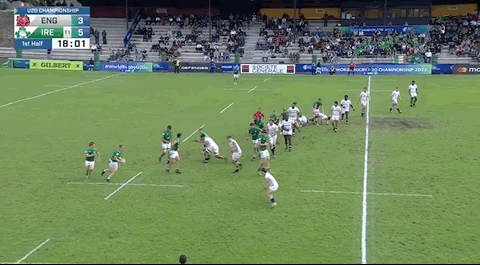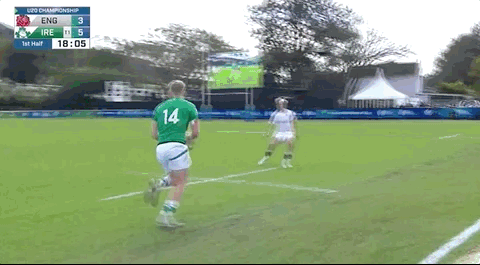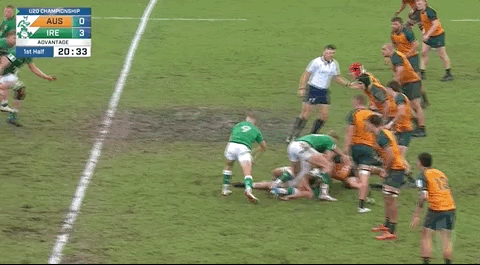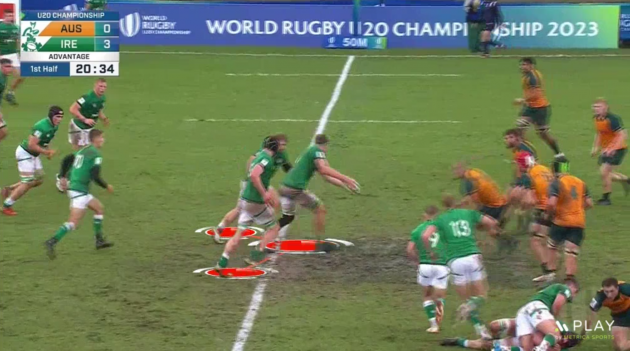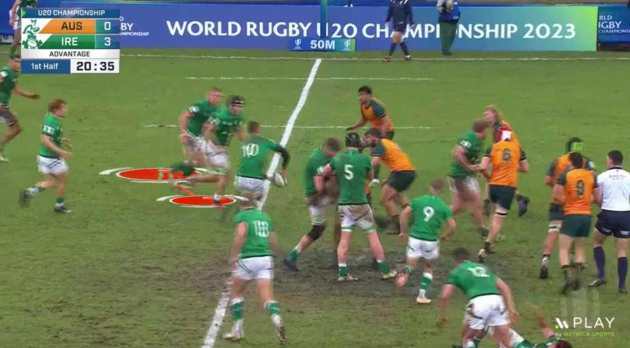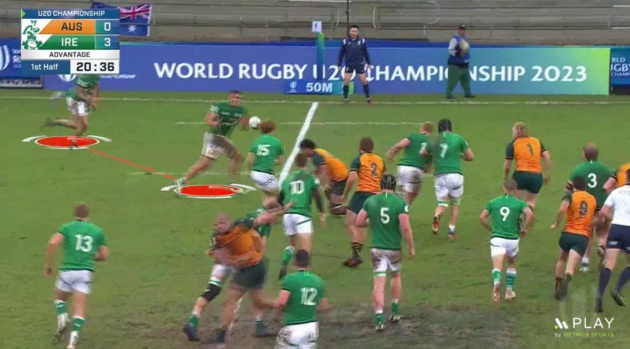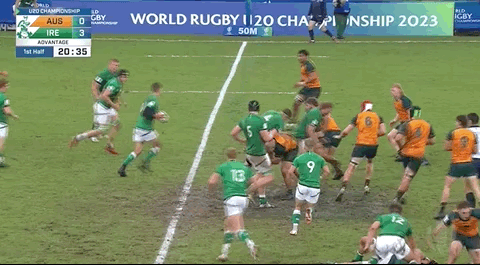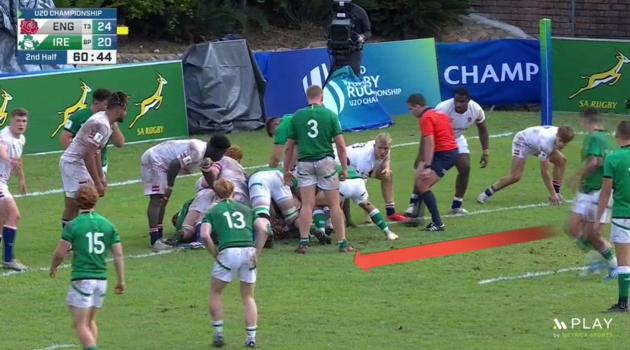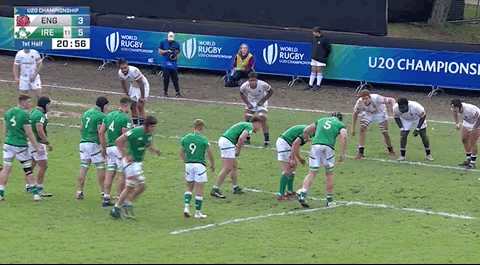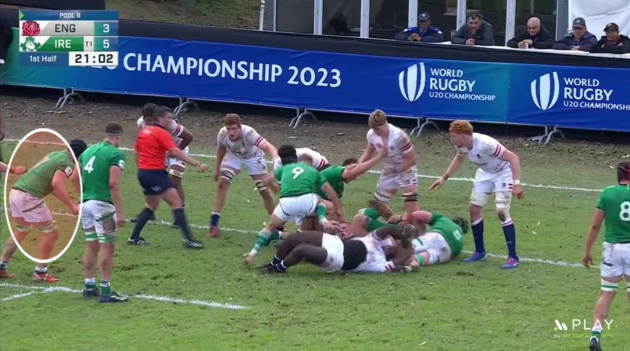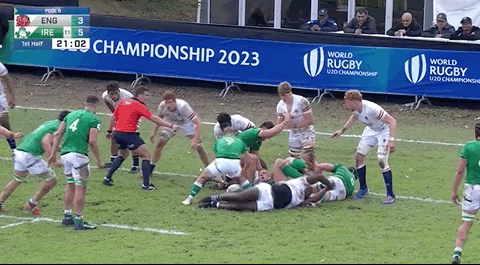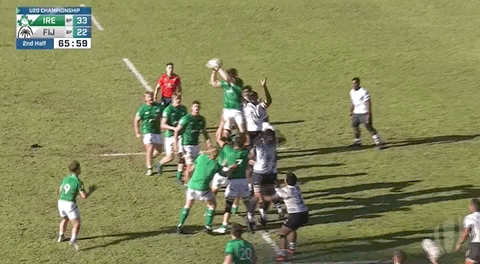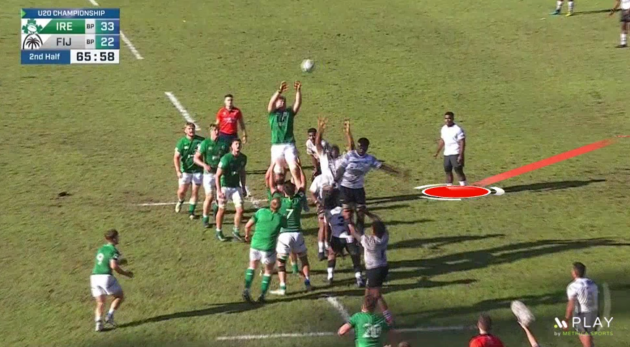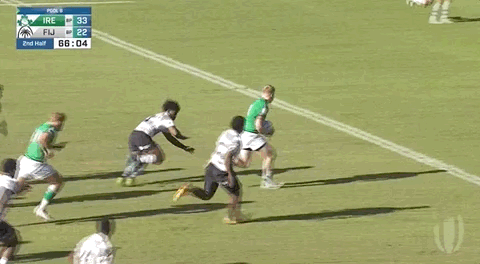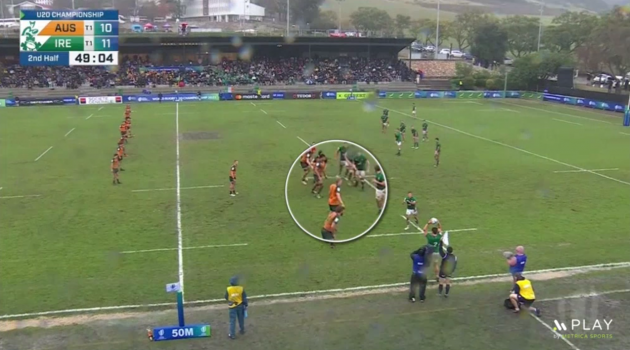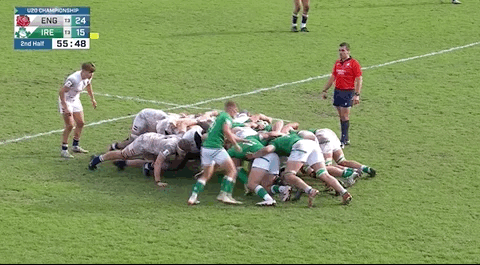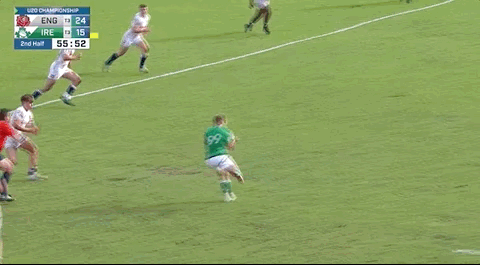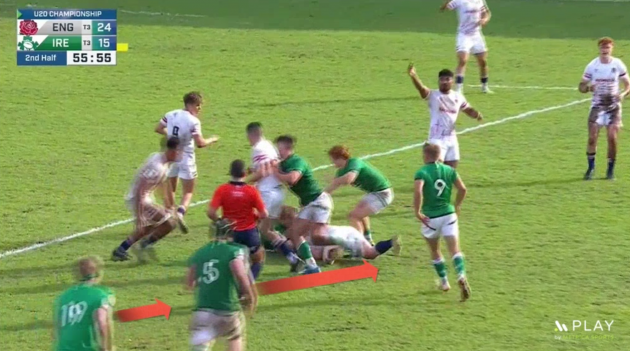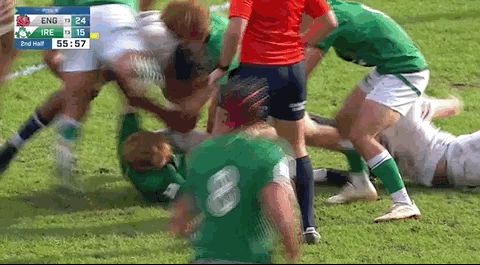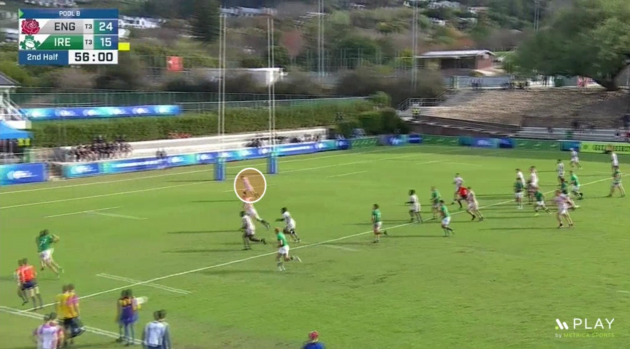THERE’S BEEN A perception in some quarters over the years that Irish players are good at doing what they’re told but struggle once the shackles are off.
Recent evidence has brought that theory into question. Andy Farrell’s senior Ireland team have lots of decision-making scope, particularly in phase-play attack, and the same applies to Richie Murphy’s excellent Ireland U20s side.
These Irish players are still excellent at enacting detailed plans, but they’re also smart enough to veer off script when the picture changes in front of them.
The U20s have swept their way into a World Championship semi-final against hosts South Africa tomorrow [KO 3.30pm, Virgin Media] with more of the exciting attacking play that helped them to a Grand Slam earlier this year.
While Murphy’s side have continued to show that they’re adaptable, particularly with a muscular, set-piece-focused win over Australia, there have been many more glimpses of their intuitive, skillful approach with ball in hand.
“We have a way of playing that allows guys to make decisions,” says Murphy. “We’re organised, definitely, but there’s plenty of room within that.
“Even in relation to our review process and previewing opposition, the players have input and understanding. They spend a lot of time together going through footage of opposition and of our training, coming up with little solutions, getting to know what the other person is thinking.
“We’re trying to develop that side of it and I think so far, guys have shown a good understanding of rugby and not necessarily just what we try to do but rugby in general.”
This is a well-coached young team and lots of what we see on the pitch is a direct result of guidance from Murphy and his assistants – Mark Sexton, Aaron Dundon, and Andrew Browne – but it’s also clear that these Irish players are comfortable at reading and reacting to changing pictures presented by defences.
They come across as smart players with strong ‘rugby IQ’ who are good at grasping coaches’ ideas.
Below is an example against England in which Ireland create space after two relatively slow rucks. Murphy’s men have been playing from right to left but suddenly swing back against the grain.
This is third phase of a lineout attack so there’s every chance it’s a planned change of direction but the Irish players are effective in their actions.
Out-half Sam Prendergast, centre Hugh Cooney, and fullback Henry McErlean are the three backs who swing from left to right in behind a pod of Irish forwards.
With loosehead prop George Hadden sweeping a pass out the back to Prendergast, Ireland swiftly create an overload on the right edge as Cooney and McErlean calmly draw defenders and deliver accurate passes.
Once he’s in space, right wing Andrew Osborne does superbly and we can see below how Cooney stays alive for the offload, hovering off Osborne’s shoulder rather than racing directly to the tackle to resource the breakdown.
It’s a nice combination of coached shape and individual skill from Ireland, with these late swings having caught out a number of defences.
Take the instance below against Australia.
It’s a similar play on fourth phase of a lineout attack. Ireland have been carrying from left to right before switching back as scrum-half Fintan Gunne hits lock Charlie Irvine.
As highlighted below, Irvine is at the heart of a three-man pod of forwards but what’s more important than the shape is his actual skill.
Irvine’s sweep pass out the back is textbook as he takes a step upfield to engage the defender in front of him before swivelling to pass almost vertically backwards just before contact.
Most of the Irish forwards are good in this regard. They’re big men, bigger than most Ireland U20s packs in the past, but they’ve got sharp skills too.
As Prendergast receives the ball, he has a two-man pod of forwards to his left.
But he goes out the back of that pod to McErlean, who has swung from right to left along with Prendergast.
And now the Irish fullback has another two Irish forwards, back row Brian Gleeson and hooker Gus McCarthy, waiting to do damage out in the 15-metre channel.
This kind of fluid interplay between forwards and backs is becoming increasingly synonymous with Irish rugby.
Again, lots of hard coaching work goes into getting everyone on the same page in terms of shapes and plays, but the players’ ability to grasp the ideas and use their decision-making skills is crucial.
Even close to the tryline, we’ve seen Ireland put together slick sequences of passes, as for McErlean’s score against England below.
Centre John Devine drops the ball out the back to Prendergast and the out-half sends McErlean over as England’s right wing bites in.
But just before the score, Ireland’s players have to get organised, with Devine shifting from the right-hand side of the ruck to the left to give Ireland a chance to finish.
These are little things but all signs of smart rugby players.
Of course, Ireland’s powerful forwards have been key to getting over the tryline from close-range, whether through the maul, their pick-and-jam game, or some of their clever five-metre tap penalties.
Power and size is important in these instances but the Irish pack have produced some clever plays too.
This variation against England is a good example. As we can see below, dynamic prop Paddy McCarthy taps and makes the initial carry.
As McCarthy carries, back row James McNabney moves across to the right to attract some attention away from the fringe of the ruck.
Ireland are going to swing a pod of forwards from left to right at a late stage here, something we’ve seen from them before. Indeed, this play is something that Leicester, the senior Ireland team, and others have used before.
With those cases in mind, the obvious ball-carrier is back row Ruadhan Quinn, highlighted below just before he swings to the right.
But watch below as scrum-half Gunne instead lifts the ball to loosehead prop Hadden, the last Irish forward of the three coming around the corner.
We can see above how the English defenders have to react to a late and unexpected wrinkle on this play. Hadden has the power to finish.
Ireland have shown their set-piece smarts at the lineout time too.
Take this effort against Fiji as Prendergast slips Osborne away for a try.
Many teams attack the ‘seam’ in behind a lineout, the space between the ‘tailgunner’ offset from the actual lineout and the first defender in the backline, as indicated below.
But here, Ireland actually attack the space inside the tailgunner.
In truth, it’s poor defence from Fiji but Ireland get their reward as Osborne races clear to finish.
Against Australia, we saw a nice lineout trick play.
Here, hooker McCarthy simply throws a short ball to Gunne and gets a return pass.
McCarthy could obviously throw into the lineout in normal fashion here, but with Australia’s loosehead prop turning towards the jumper behind him, it leaves Ireland with a two-on-one close to the touchline.
McCarthy takes the smart option and though Gunne is tackled into touch, it’s a sign of Ireland’s decision-making comfort.
Perhaps Ireland’s most impressive set-piece strike so far in this Championship came when they were down to 14 players against England.
It comes from a left-hand-side scrum outside England’s 22 as Quinn pops to Gunne off the base.
Note how Quinn immediately backs away towards the left touchline rather than following the ball.
Gunne fires a pass to Devine in midfield and he tips the ball onto Cooney for a direct carry.
Although Quinn has moved wide to the left, the two Irish locks work hard to show around the corner, suggesting to England that Ireland intend to carry to their right again.
Instead, Gunne instantly bounces back to his left and launches a superb left-footed kick that allows Quinn to finish.
As noted below, Ireland’s play has dragged the English right wing all the way into the middle of the backfield and he has no time to react, while English tight forwards have been distracted by the Irish front row on the left of the ruck.
It’s a beauty of a score from Ireland and this one is almost certainly the brainchild of Murphy and Sexton, who combine to coach the Irish set-piece attack.
This aspect of the game is something the Irish players clearly enjoy and Murphy says they are now feeding their own thoughts and ideas into the mix.
“The guys definitely have seen things and from the coaches’ eyes, if we’ve pointed out some things for them, on the back of that they’re definitely picking up and starting to come with some ideas in relation to, ‘They’re doing this, so what about this?’
“Myself and Mark sort of run that side of the attack but there’s definitely input from the players at this stage.
“They’re probably getting a little bit excited as well in relation to what we can do.”
So say all of us.
